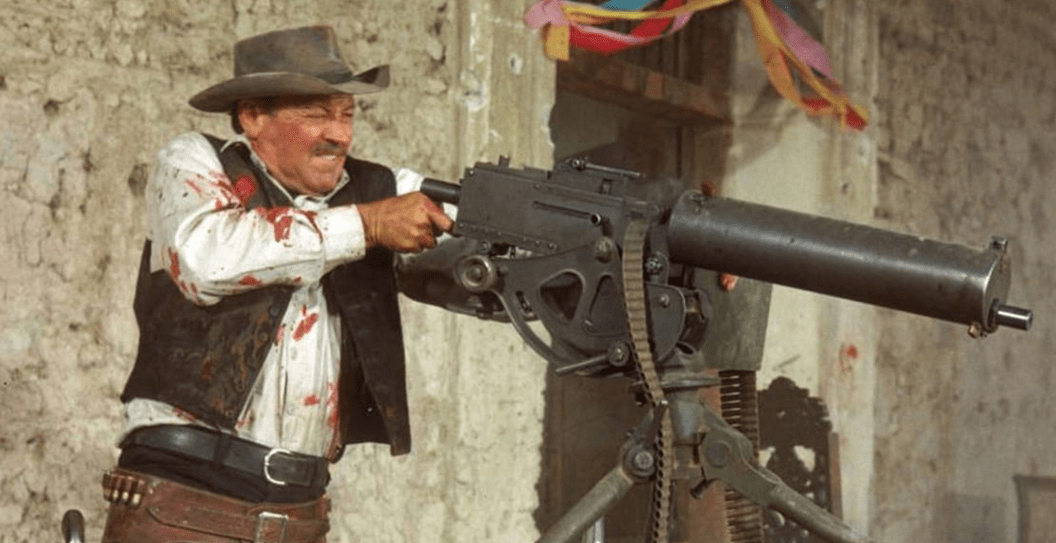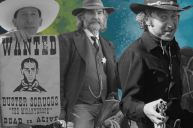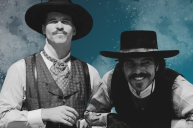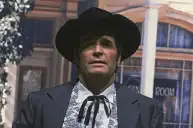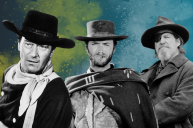All the plot-weaving and tough guy-posturing have led to this: the shootout. The epic showdown. The climax of any Western movie that's worth its salt. Townsfolk board and batten the shutters. Tumbleweeds bounce in an empty, dusty street. And in the middle of that street, our hero squares up 20 paces from his adversary, fingers twitching above the grip of a Frontier Six-Shooter. A harmonica whines. A crow caws, sounding the dinner bell. The camera cuts to a close-up of squinted eyes, of pursed lips above a stubbled chin.
Videos by Wide Open Country
The hero draws, his hand a flurry at the belt. A gleam of metal.
Two shots ring out almost simultaneously, like a beat on a snare drum.
Both men stand tall. Then the adversary wobbles a little, keels over hard and sprawls in the dirt. Dead.
Our hero growls, mildly agitated if not entirely unfazed.
Or a more-hectic approach. Two rival posses on horseback collide on the battlefield, guns blazing through a cloud of dust kicked up by angry hooves. Or popping off shots from the second-story window of a clapboard building, or from behind an overturned table in a saloon as whiskey bottles explode all around.
These classic Western shootouts are easy to imagine. They're so iconic, revolutionary and influential that they became etched into the zeitgeist before fading into cliché, forcing later filmmakers to innovate Wild West gunplay in exciting and brutal new ways.
Though the shootout evolved, the event itself remained emblematic of not only the Western genre but also cinema as a whole.
Let's celebrate the scrappy Western shootout by revisiting some of the best in film history.
'The Gunfight at the O.K. Corral' (1957)
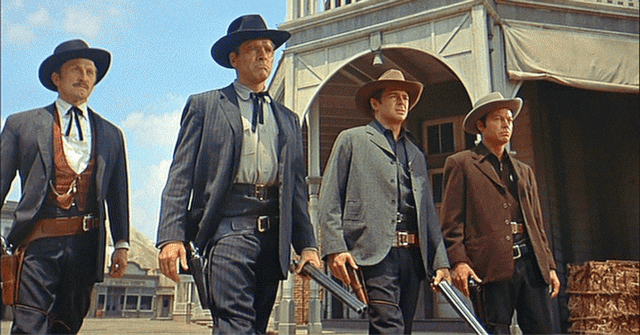
Paramount Pictures
This legendary cinematic showdown unfolds in the dusty streets of Tombstone, Arizona. The Earp brothers, portrayed by Burt Lancaster as Wyatt Earp and Kirk Douglas as Doc Holliday, stand resolute against the notorious Clanton gang. Known for its suspenseful buildup, this shootout combines classic Western elements: the slow, tension-filled walk toward the confrontation, the clinking of spurs, and the dramatic faceoff. It's a perfect example of the Wild West's moral ambiguity, where lawmen face off against outlaws, and the line between good and bad is blurred.
Where to watch: MGM+, Paramount+, Prime Video
'The Wild Bunch' (1969)
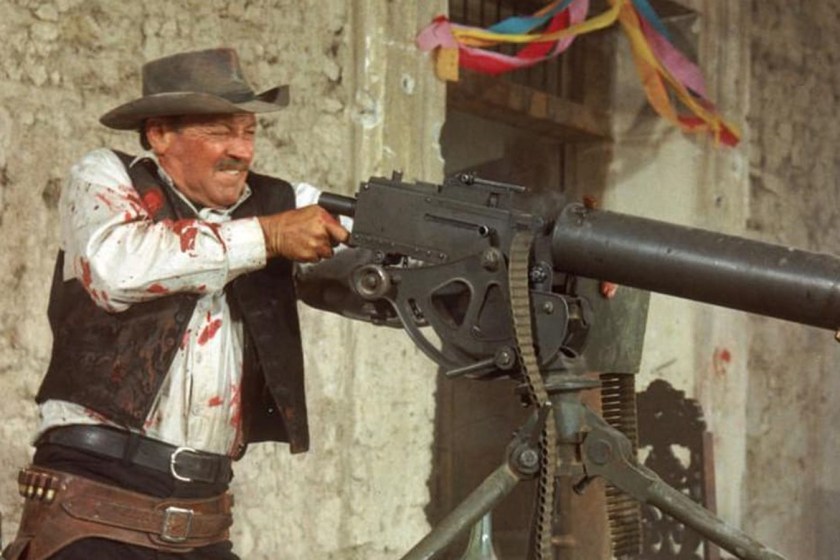
Warner Bros./Seven Arts
Sam Peckinpah's Western masterpiece is known for its graphic violence and chaotic action sequences, and the final confrontation is no exception. The shootout between the titular gang and a Mexican army is characterized by slow-motion gun battles and a relentless onslaught. The use of slow motion allows for a more-detailed and visceral portrayal of the violence, making it a hallmark of Peckinpah's style. The scene underscores the brutality and harsh reality of the Old West, marking a significant departure from traditional Western shootouts.
Where to watch: Rent on Amazon
'Unforgiven' (1992)
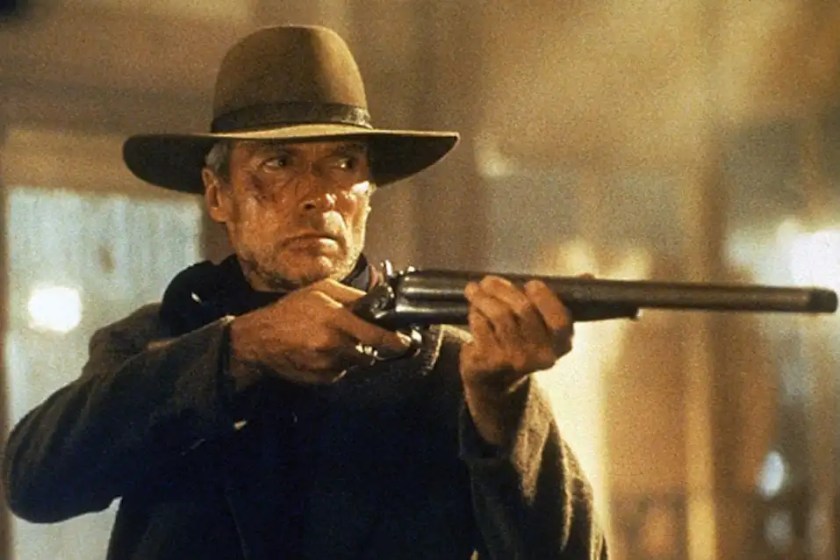
Warner Bros.
Clint Eastwood's "Unforgiven" is a bleak and unflinching portrayal of the consequences of violence and revenge. In the film's climactic shootout, Eastwood's character, William Munny, confronts corrupt lawmen who have brutalized his partner. The tension is palpable as Munny, a reformed outlaw, is pushed to his limits. The shootout is characterized by the moral complexity of the characters, highlighting the blurred lines between good and bad. It's a somber and thought-provoking scene that challenges the romanticized notions of heroism often associated with the Western genre.
Where to watch: Philo, YouTube, Prime Video, Sling TV
'Open Range' (2003)
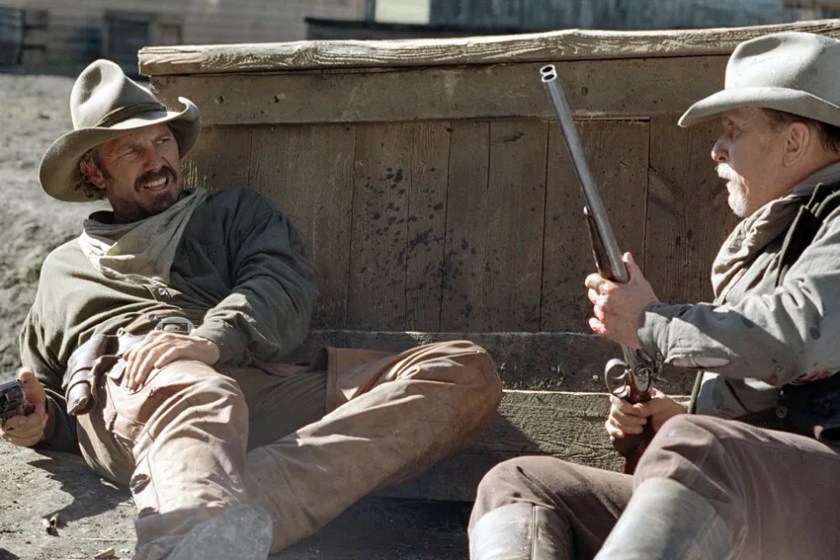
Buena Vista Pictures Distribution
In this film, Kevin Costner and Robert Duvall engage in an old-fashioned gun battle against a corrupt cattle baron's henchmen. What sets this shootout apart is its meticulous pacing, emphasizing the tension and the impact of each bullet. The film's dedication to authenticity is evident as the characters take cover, strategize and cautiously move through the town. The audience feels the danger and uncertainty that accompanied life in the Wild West. This shootout is a testament to the meticulous craftsmanship that went into re-creating the era's realism, making it a standout moment in the film.
Where to watch: Rent on Amazon
'3:10 to Yuma' (2007)
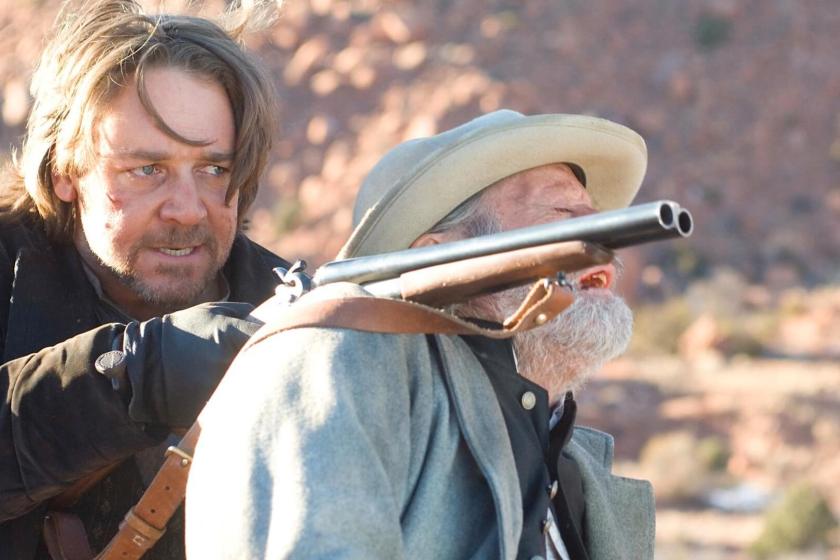
Lionsgate
The final showdown between Russell Crowe's charismatic outlaw, Ben Wade, and Christian Bale's struggling rancher, Dan Evans, is a moment of high tension. As they face off at the train station, the conflicting principles of the characters reach their peak. What makes this shootout special is the moral complexity that underlies the action. Wade is a charming and morally ambiguous character, and Evans is driven by his sense of duty. The shootout becomes a thrilling, morally charged climax that explores the blurred lines between good and bad in the Old West.
Where to watch: Peacock, rent on Amazon
'Tombstone' (1993)
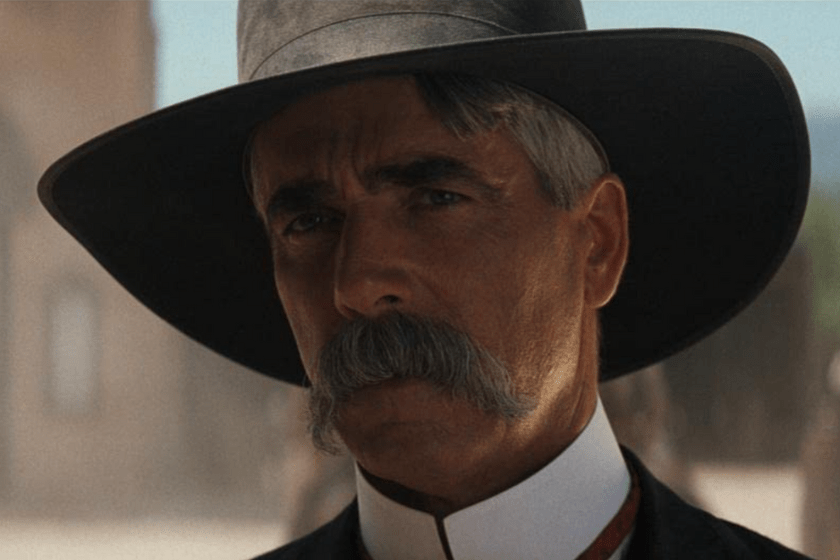
IMDB/Hollywood Pictures
In this film, Val Kilmer delivers a charismatic performance as Doc Holliday, who, alongside Kurt Russell's Wyatt Earp, faces off against the ruthless Cowboy gang in the streets of Tombstone. What sets this shootout apart are the high stakes and the intense gunplay. Kilmer's portrayal of Holliday adds a layer of complexity to the character, making the confrontation unforgettable. The tension, combined with the film's portrayal of justice and the fight against lawlessness, results in a memorable and action-packed climax that has become a fan favorite in the Western genre.
Where to watch: Rent on Amazon
'The Quick and the Dead' (1995)
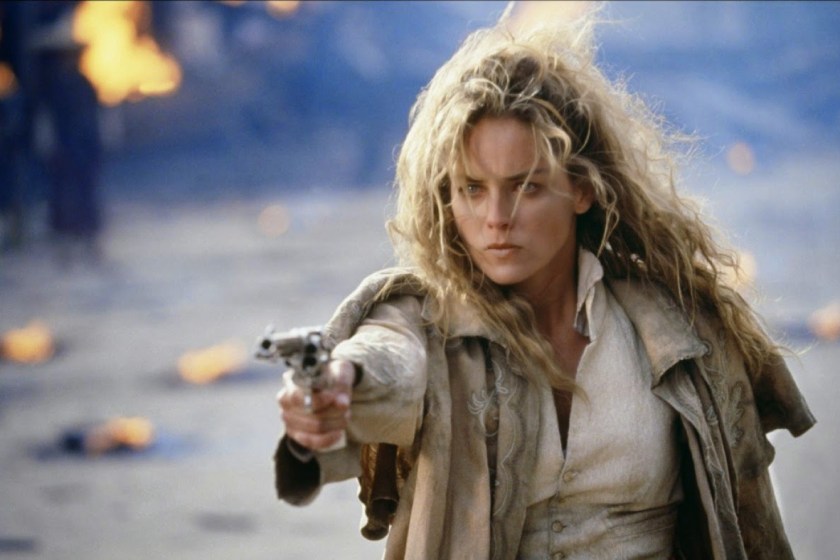
TriStar Pictures
Sharon Stone's character, The Lady, engages in a deadly quick-draw contest against a motley crew of eccentric gunmen. This shootout is filled with tension and anticipation as the competitors square off in a high-stakes showdown. What makes this scene stand out is the film's unique premise, where contestants from various backgrounds and personalities participate in the contest. The stylized action sequences, including quick draws and clever tactics, add to the excitement. The shootout is a standout moment in the Western genre, combining elements of suspense and action with a touch of the unconventional.
Where to watch: Sling, rent on Google Play, rent on AppleTV
'Butch Cassidy and the Sundance Kid' (1969)
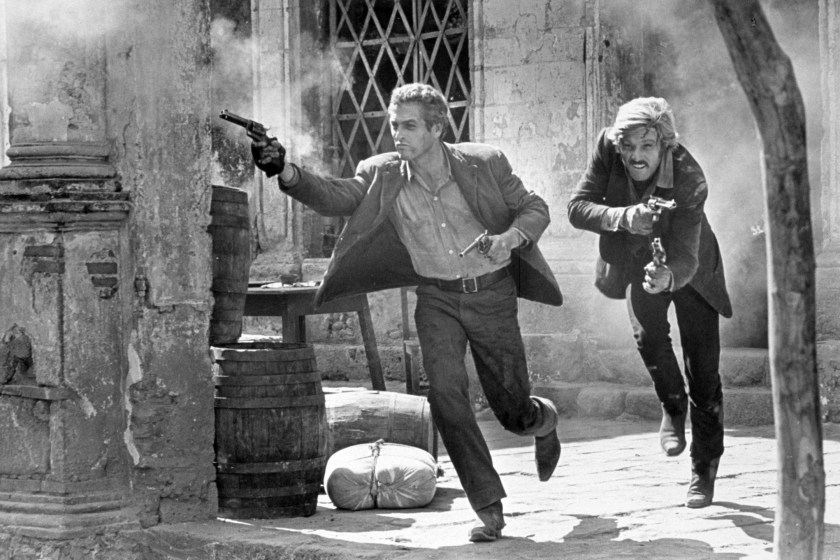
Bettmann Archive
The climactic showdown in this film is set in a Bolivian village, where lovable outlaws Butch Cassidy (Paul Newman) and the Sundance Kid (Robert Redford) face off against a relentless posse. What sets this shootout apart is the charismatic banter between the two leading characters. As they prepare to confront the posse, their witty and humorous dialogue adds a layer of camaraderie, humanizing the outlaws. The audience is torn between rooting for the endearing duo and empathizing with the impending danger. This memorable scene combines action and humor, creating a unique and emotionally charged climax.
Where to watch: Max
'High Noon' (1952)
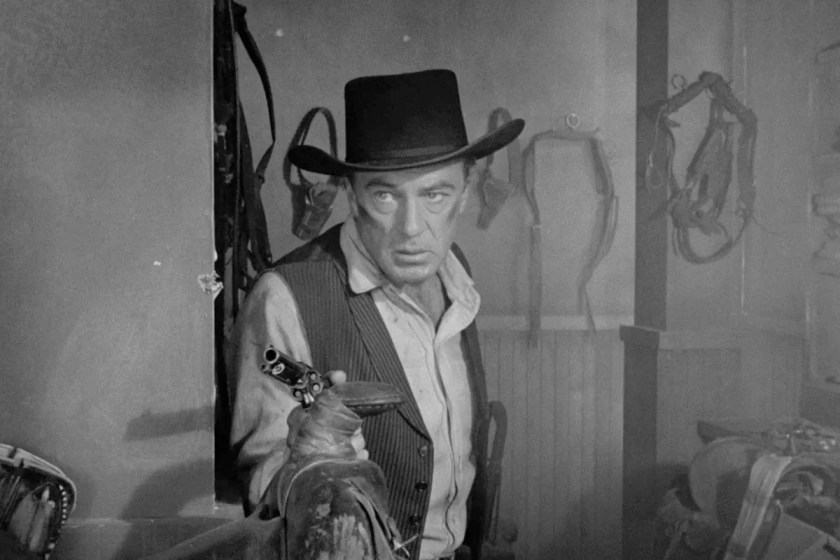
United Artists
Gary Cooper's portrayal of Marshal Will Kane's desperate fight against a gang of outlaws is a masterclass in tension. The real-time buildup to the noon train's arrival, bringing the outlaws into town, creates palpable suspense. The ticking clock amplifies the pressure as Kane must stand alone to defend his town. It's a battle of one man's unwavering determination against overwhelming odds, making it one of the most psychologically intense shootouts in Western cinema.
Where to watch: Sling TV, YouTube, rent on Amazon
'The Good, The Bad, and The Ugly' (1966)
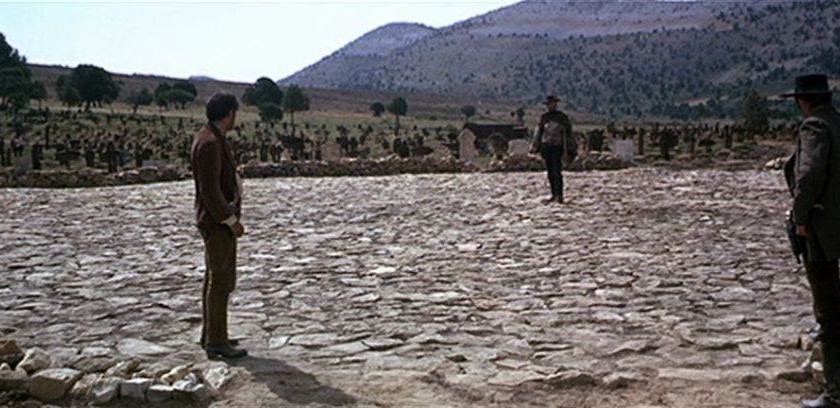
United Artists
Sergio Leone's epic masterpiece features a climactic three-way duel in a cemetery. The scene is a study in tension-building, where the Good (Clint Eastwood), the Bad (Lee Van Cleef), and the Ugly (Eli Wallach) face each other. As Ennio Morricone's iconic score swells, the camera cuts between the characters' sweat-dripping faces and hands inching toward their holsters. The audience is held in suspense as the intense close-quarter gunplay unfolds, punctuated by the film's trademark long silences. This scene is a pinnacle of Western filmmaking.
Where to watch: Cinemax
